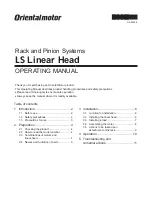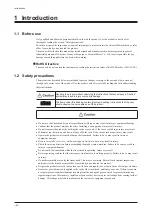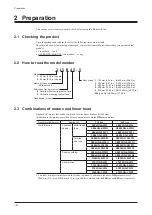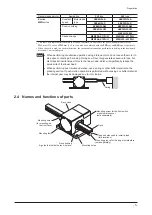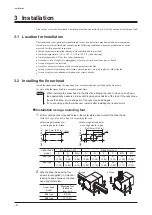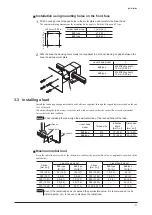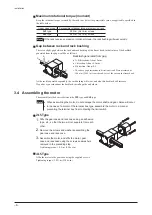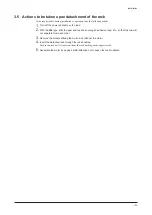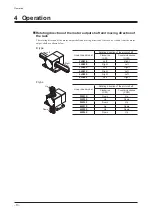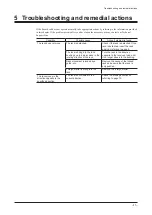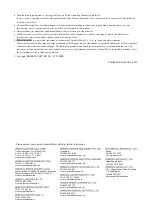
Introduction
−3−
1.3 Precautions for use
This section covers limitations and requirements the user should consider when using the
LS
linear head.
•
Operate the motor at or below the maximum transportable mass.
If the motor is operated while receiving a load greater than the maximum transportable mass, the rack tooth
surface or pinion, may be damaged. Always operate the motor under a load equivalent to or below the
maximum transportable mass.
•
Do not apply an radial load in excess of the specified permissible limit.
If the motor is operated continuously under an radial load exceeding the permissible limit, the rack bushings
may be worn quickly or even damaged. Always keep the radial load to the permissible limit or below.
Even if the radial load is kept to the permissible limit or below, repeated operation of the lineard motor will
still cause the rack bushings to wear. To suppress rack bushing wear, install a guide, etc., to reduce the radial
load or rotational torque.
•
Do not stop the rack by means of contact.
Never allow the moving rack to contact a hard object. The shock may damage the rack tooth surface, pinion
and/or gear.
•
Reversing the rack
Be sure to reverse the lineard motor before either end of the rack enters the rack bushing. The rack operates
properly when being supported by the rack bushings on both sides of the rack case.
•
Lubricating the rack
Do not wipe grease off the rack surface or the tooth surface meshing with the pinion. Grease is pre-charged
in the rack case before shipment. If grease is wiped off, the rack and pinion life will become shorter. Always
keep the rack surface and tooth surface properly greased during operation.
•
Measures to prevent the rack from dropping
The electromagnetic brake built into the electromagnetic brake motor is of the non-excitation operation type.
While power is not supplied to the electromagnetic brake, the rack is held in position. When power is
supplied, the brake will be released and the rack will become movable.
When the linear head is installed in the direction allowing the rack to move up and down, the load and/or rack
may drop if the electromagnetic brake is released in a standstill state.
Lay a buffer material, etc., underneath to prevent damage that may otherwise result from dropping of the load
and/or rack.

